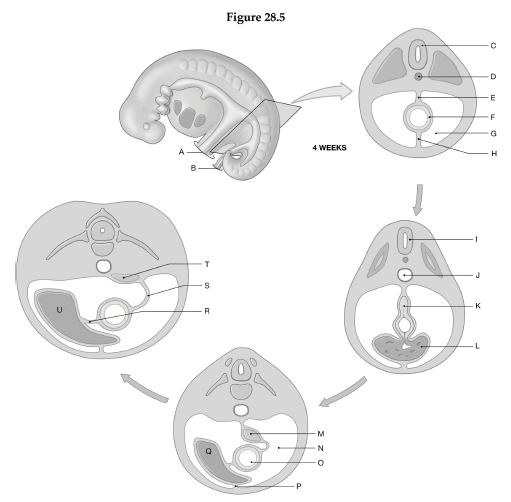What bone does NOT articulate directly with any other bone?
a. hamate
b. calcaneus
c. hyoid
d. mandible
Answer: c. hyoid
You might also like to view...
The typical value of water losses and gains each day is
A) 500 mL. B) 1000 mL. C) 1500 mL. D) 2000 mL. E) 2500 mL.
The tissue layer that underlies the skin and is essential to its function is the ________ layer, also called the hypodermis or superficial fascia.
What will be an ideal response?
Using the figure below, identify the labeled part.

1) Label A: ______________________________
2) Label B: ______________________________
3) Label C: ______________________________
4) Label D: ______________________________
5) Label E: ______________________________
6) Label F: ______________________________
7) Label G: ______________________________
8) Label H: ______________________________
9) Label I: ______________________________
10) Label J: ______________________________
11) Label K: ______________________________
12) Label L: ______________________________
13) Label M: ______________________________
14) Label N: ______________________________
15) Label O: ______________________________
16) Label P: ______________________________
17) Label Q: ______________________________
18) Label R: ______________________________
19) Label S: ______________________________
20) Label T: ______________________________
21) Label U: ______________________________
A 63-year-old man was admitted to hospital 1 hour after experiencing substernal chest pain
He was weak and diaphoretic, and his heart was beating rapidly at 90 beats/min as a consequence of having a coronary artery occlusion that impaired blood flow to the left ventricle. From an ECG, it was determined that the tachycardia originated in the SA node. Before therapy could be started, the man became much weaker and his arterial pulse rate was about 45 beats/min, yet the ECG revealed an atrial rate of 90 beats/min. A cardiac pacemaker was inserted because the AV node had been damaged by ischemia. With the implanted pacemaker set at 75 beats/min, he felt somewhat better and drug therapy was initiated. The most likely mechanism responsible for the patient's arterial pulse rate of about 40 beats/min after impulse conduction through the AV junction was blocked is: A. excitation of the ventricles via an AV bypass tract B. conversion of ventricular myocardial fibers to automatic cells C. firing of ventricular ectopic cells that have the same electrophysiolgical characteristics as SA node cells D. firing of automatic cells (Purkinje fibers) in the specialized conduction system of the ventricles E. excitation of ventricular cells by the rhythmic activity in the autonomic neurons that innervate the heart